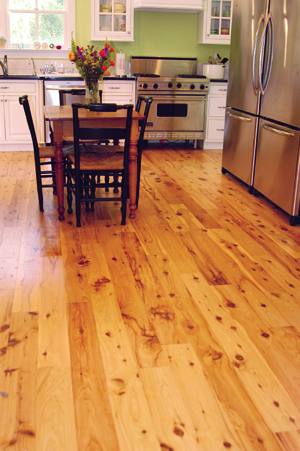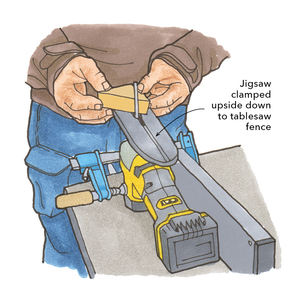
My wife and I built the house we live in. Because we faced more restrictive deadlines, this one was a greater source of stress than the other house we’d built, or the house before that we’d renovated. The lease on our rented house ran out before we were done, and the landlord sold the place out from under us. The nerve… Plus, we wanted our kids in their new school at the start of the year. So, we had to move in before the house was finished. One task we had to finish to get a certificate of occupancy from the town was installing “impermeable” flooring in the kitchen and at least one bathroom. Certain that I’d be permanently tiling those rooms within months, a year at the outside, we bought the cheapest vinyl we could find. When the sales clerk asked what color and pattern we wanted, our answer was “Cheap.”
That was 15 years ago. I still haven’t tiled those floors. The vinyl looks like hell, torn and stained. It’s embarrassing, really. The good news is that I did install and finish all the hardwood flooring before we moved in, and that’s held up fine. It may be why my wife hasn’t divorced me.
So, flooring material. Don’t go with cheap vinyl unless you’re sure, absolutely sure, you’ll replace it. Regular, site-finished hardwood is an awesome choice. Installation is something a skilled DIYer can tackle, but in a bit of shameless promotion, I’d absolutely recommend that you first buy and read Taunton’s book, Wood Flooring. I know it’s a great book because I co-wrote it. I mainly supplied the writing expertise—Charlie Peterson supplied his encyclopedic knowledge of wood flooring. Even after 15 years as a carpenter, and, at the time, a dozen years as a residential construction magazine editor, my knowledge of wood flooring grew an order of magnitude working on that book. To be sure, the book goes far deeper than what most people need. But the basic information on installing and finishing hardwood is the best I’ve found. Compared to the cost of screwing up a wood floor, the book is vanishingly cheap.
In our previous house, most of the flooring was Bruce glue-down engineered wood. Honestly, we chose that because we could live with the look, and my wife found a great deal on a pile of the stuff at a flooring store that was going under. It went down quickly and easily, and gave us no trouble in the year we lived in that house.
When I do get around to tiling our current house (and the foyers are getting done soon—watch for a video of the process to show up here), I’ll be sure to follow the recommendations in the Tile Council of North America’s Handbook. It’s another $30 book, and, again, it costs nothing compared to a botched floor.
That said, I’m not sold on tile for the kitchen. Ceramic tile does have a look that goes with the Arts and Crafts theme of our house, but it’s a hard floor, and my knees and back are well past middle age, assuming I don’t plan to live for a century. Their resiliency makes cork, linoleum, and rubber seem like interesting possibilities. What I do know is that I won’t be using vinyl, even though the good stuff is far more durable than the dreck I live with now. It’s an aesthetic thing for me—most vinyl is an attempt to look like something else, say, ceramic tile. I like materials that make no attempt to hide what they are.
Fine Homebuilding Recommended Products
Fine Homebuilding receives a commission for items purchased through links on this site, including Amazon Associates and other affiliate advertising programs.

8067 All-Weather Flashing Tape

Affordable IR Camera

Handy Heat Gun


























